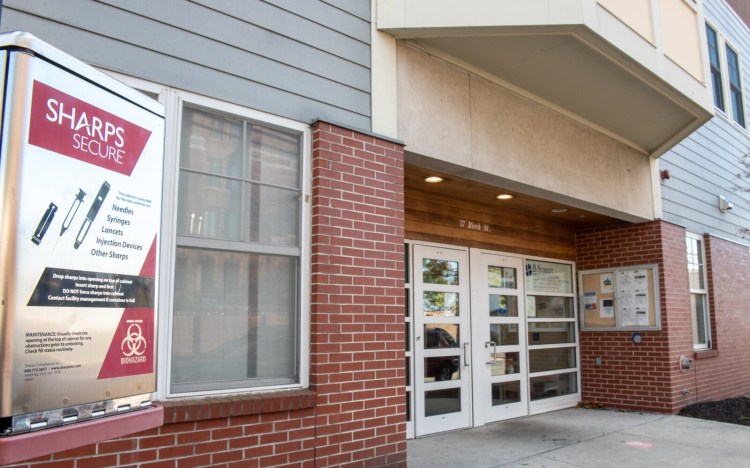A collaboration between seven community health clinics with more than 30 locations across the state are working together to make treatment for opioid use disorder easier for Mainers to access.
Starting Nov. 18, Penobscot Community Health Care, a Federally Qualified Health Center with eight locations in the Bangor area, and the Maine Primary Care Association will launch the 12-month pilot program. They will train and advise providers from the six other health centers on how to build and maintain low barrier-to-access, medication-first model of treatment programs in their communities.
Collectively, the health centers serve 13 counties and about 210,000 patients each year.
The pilot program is based on a learning and teaching model developed by the University of New Mexico in which faculty from organizations that have developed successful models of care apply their experiences and knowledge to train providers from other organizations on how to implement similar programs that are customized to their communities.
Penobscot Community Health Care launched its treatment program, Bridge Clinic, about three years ago, Chief Medical Officer Dr. Noah Nesin said Wednesday during a virtual event.
“And in the months and years since then, we’ve treated hundreds of people who might not otherwise have been able to access this life-saving treatment,” he said.
Three of the six health centers provide services to people in Androscoggin, Franklin and Oxford counties:
• Community Clinical Services, which includes B Street Clinic and CCS Family Health Center in Lewiston, and CCS Second Street Health Center in Auburn.
• HealthReach Community Health Centers, which includes Bethel Family Health Center, Mt. Abram Regional Health Center in Kingfield, Rangeley Family Medicine, Strong Area Health Center, Western Maine Family Health Center in Livermore Falls, and six other locations in Kennebec, Lincoln, Sagadahoc and Somerset counties.
• DFD Russell Medical Centers, which has locations in Bridgton, Leeds, Monmouth and Turner.

The exterior of B Street Community Center at the corner of Bates and Birch streets in Lewiston on Nov. 10. The clinic there will be one of several area health clinics launching a low-barrier opioid use disorder treatment program. Russ Dillingham/Sun Journal
The three other participating health centers are Bucksport Regional Health Center in Hancock County, Health Access Network and Hometown Health Center in Penobscot County.
“It really has been a long time coming. It’s very badly needed,” said Gordon Smith, director of opioid response for the Governor’s Office of Policy Innovation and the Future.
“We continue to see a spike in fatal overdoses and having treatment available when people who are using drugs are ready to come into treatment, we need to have that treatment available immediately,” he said.
Low barrier, medication assisted treatment is considered the gold standard of opioid use disorder treatment, Dr. Christopher Pezzullo, clinical director for Maine Primary Care Association, said.
This program is “in response to an American health system that often doesn’t recognize that addiction is a chronic disease, or fails to provide treatment to a patient who is (set in their behavior) or has relapsed,” he said.
Medication assisted treatment describes the use of medication where clinically appropriate to treat substance use disorder. Low barrier treatment is a model of care that is more holistic and has a flexible approach to an individual’s needs rather than traditional outpatient treatment programs, Nesin said.
Often, traditional outpatient treatment programs make commitments such as individual counseling, group therapy and regular prescriber visits a condition of a prescription for medications like buprenorphine and methadone.
But that condition fails to recognize the many challenges that a person seeking treatment for their substance use disorder may face, Nesin said.
“That requires one, that your disease is stable enough that you can attend to all of those requirements; two, that you have transportation and some level of social supports and relationships that help you engage in all of that,” he said.
Those requirements will typically disqualify those with the most severe opioid use disorder, “the people most likely to die in the short term and the medium term from their opioid use disorder,” because they are also the people least likely to have those resources necessary to participate,” he said.
It is not accepted practice for a provider to tell a diabetes patient that they can’t get the insulin they need to survive until they see a dietitian, go to group therapy and maintain a healthy weight, Nesin said. The same should be true for treating people with opioid use disorder, Nesin said.
“This really is a recognition that opioid use disorder as a chronic disease very much like other chronic diseases, you’ve got to stabilize the disease in order for people to access all of the care that we think is important for them to achieve full recovery,” Nesin said.
Low barrier treatment aims to be as flexible as possible to keep people engaged in their care and then once they are more stable, to work with them to add in “all the other aspects of care that we think are so vital to full recovery.”
Copy the Story LinkSend questions/comments to the editors.



Success. Please wait for the page to reload. If the page does not reload within 5 seconds, please refresh the page.
Enter your email and password to access comments.
Hi, to comment on stories you must . This profile is in addition to your subscription and website login.
Already have a commenting profile? .
Invalid username/password.
Please check your email to confirm and complete your registration.
Only subscribers are eligible to post comments. Please subscribe or login first for digital access. Here’s why.
Use the form below to reset your password. When you've submitted your account email, we will send an email with a reset code.